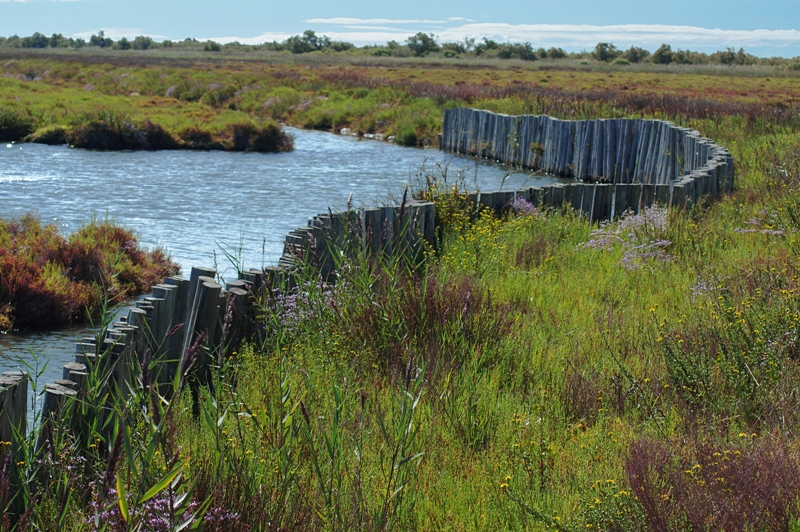
They du Mazet, the Rhône estuary
10 points of interest
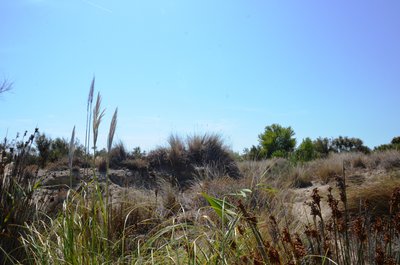
Cordon dunaire du canal Saint-Antoine - ©Juliette Primpier - PNR Camargue  Flora
FloraThe dune cord
The dunes are the result of rearrangements following the creation of the Saint-Antoine canal. The sandy substrate more or less coarse is a set constantly remodeled by winds and spray, experiencing a severe drought. This typical Mediterranean habitat is populated by characteristic and fragile species that must be protected. L’Immortelle des Sables is very present on the dunes of Mazet, it owes its name to the exceptional longevity of its flowers.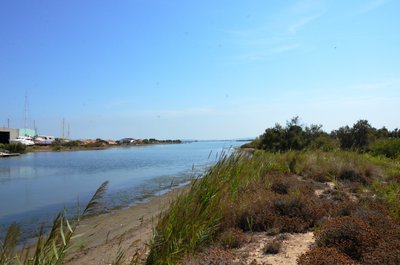
Canal de Saint-Antoine - ©Juliette Primpier - PNR Camargue  Water and rivers
Water and riversThe Saint-Antoine canal
Sea trades have always been an important sector for the development of Port-Saint-Louis-du-Rhône. The area around the canal, locally known as the "new canal", has recently been developed to favor the establishment of businesses oriented towards the maritime sector. At the edge of this canal, we find a booming recreational sector, a shellfish farming sector (mussel and oyster farming) and a fishing and seafood processing sector.
Plantes halophiles de sansouire - ©Juliette Primpier - PNR Camargue  Flora
FloraThe sansouire
The sansouire is characterized by the high salt content of a non-irrigated soil whose silt is bleached by the rise of salt. Only halophilic plants resist: salicornia, saladella, Obione and soda. The combustion of soda produces crystals formerly used for the manufacture of Marseille soaps or in the manufacture of glass. From the 13th to the 19th century, this plant is harvested and marketed by Camarguais, then it is replaced by chemical soda.
Chevalier gambette - ©Emmanuel Vialet - PNR Camargue  Fauna
FaunaThe Redshank, a species in danger
This elegant wading bird is easily recognizable by its average size (25 cm). This bird has long legs and a bright orange bill, the brown colour of its plumage reveals a white area on the back. His flute song is bi-syballic. The theys of Mazet and Levant welcome each year several couples; the first arrives in March. The period extends until the month of July. The nests are very discreet, hidden on the ground or in the dense clumps of the salicorne.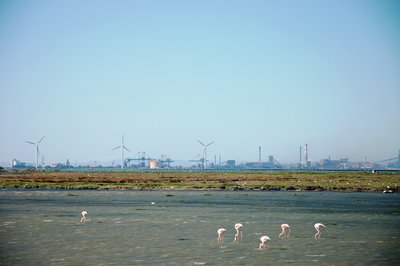
Littoral du Mazet - ©Muriel Cervilla - PNR Camargue  Water and rivers
Water and riversThe Mazet coastline
The Mazet coastline is part of the Carteau cove, which is characterized by a shallow water depth and regular freshwater inputs from the Rhone, suitable for a wide variety of plant and animal species. The pink flamingo and many waders feed on the micro-fauna buried in the ground. Its muddy bottoms host varied seashells and the waters a great diversity of fish such as gilthead sea bream. This beach is very popular with fishermen.
Ragondin - ©Emmanuel Vialet - PNR Camargue  Fauna
FaunaThe Mazet fauna
Several species benefit from the Mazet spaces The Garenne rabbit is a small twilit and nocturnal rodent that lives in colonies in burrows, galleries dug in the sandy soil (garennes). The nutria is a rodent of 6 kg on average who lives in the roubines (small canals). The fox is a en easy going predator that feeds on birds and small mammals. One can easily spot the traces of plowing from wild boar that he makes with his snout to eat.
Zone industrialo-portuaire proche du they du Mazet - ©Muriel Cervilla - PNR Camargue  Water and rivers
Water and riversThe industrial interface
The industrial-port area, built in the 1970s, is a vast site of almost 10,000 ha. This strategic location is explained by the presence of the sea and sandy bottoms facilitating the development in favor of navigation. Natural spaces remain and it is important to protect them. The they of the Mazet is a witness of the changes to the Rhone estuary in the course of time. This sandy formation modeled by the sea and the river is regularly submerged.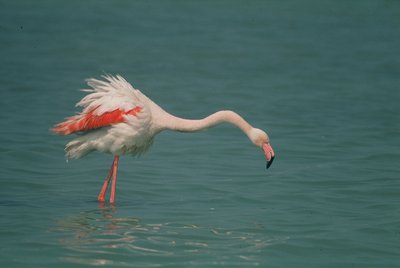
Flamant rose se brouant - ©Emmanuel Vialet - PNR Camargue  Fauna
FaunaThe pink flamingo
Emblem of the Camargue, the pink flamingo owes its colour partly to the carotene pigments contained in its food (crustaceans, algae and invertebrates). This species moves around the Mediterranean but it is in the Camargue that there is the largest population, single reproduction island. In the spring, they nest in the colony, the male and the female incubate in turn the only egg deposited in a mud nest. Gray at birth, he will fly when he is around 10 weeks old and will turn pink around 3 years old.
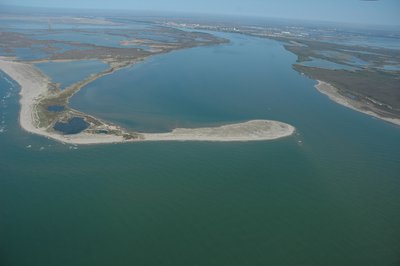
Delta du Rhône - ©Opus Species - PNR Camargue  Water and rivers
Water and riversThe Grand-Rhône estuary
Over the centuries, the formation of the Rhone delta has shaped he aspect of its estuary. The strong floods of 1711 created the current bed of the Rhone River. The current estuary is the widest of the last two Rhone estuary, which counted up to seven! The Rhone estuary is accessible from the Napoléon beach by walking towards the north-west (2h).
They de Roustan - ©Opus Species - PNR Camargue  Water and rivers
Water and riversThe theys of the mouth of the Rhone
A they is a sandy formation modeled by the sea and the river. Around the Port-Saint-Louis-du-Rhone, the theys have gradually become interconnected. They are called ships or captains. The They du Mazet, acquired by the Conservatoire du littoral since 1980 is a feeding, resting and breeding area for many birds and an abundant and original flora. They of the Gracieuse mark the entrance of the Cove of Carteau and that of Roustan leads to the Napoleon beach.
Description
1 - After passing the "cordon dunaire" sign, at the bend, turn right to go to the "Le canal de Saint-Antoine" sign. Then follow the red arrows that lead to the sign "La Faune du Mazet" and continue to the next sign "Le Chevalier Gambette : une espèce en danger ". Continue to the gateway. After the gateway, follow the path to the next gateway.
2 - At the second gateway, turn around and take the path in the opposite direction to return to the starting point.
- Departure : Route de la Plage Napoléon, Port-Saint-Louis-du-Rhône
- Arrival : Port-Saint-Louis-du-Rhône
- Towns crossed : Port-Saint-Louis-du-Rhône
Forecast
Altimetric profile
Recommandations
Respect the surrounding animals.
Discovery trail with landscape reading boards.
Circuit not recommended in rainy weather.
Information desks
Domaine de La Palissade
BP 5, 13129 Salin-de-Giraud
the Camargue museum
Mas du pont de rousty, 13200 Arles
Remember to visit the Camargue museum! It is located next to the administrative centre of the Camargue Nature Park.
OT Port-Saint-Louis-du-Rhône
Tour Saint Louis - Quai Bonnardel, 13230 Port-Saint-Louis-du-Rhône
Transport
Access and parking
Parking :
Report a problem or an error
If you have found an error on this page or if you have noticed any problems during your hike, please report them to us here:


